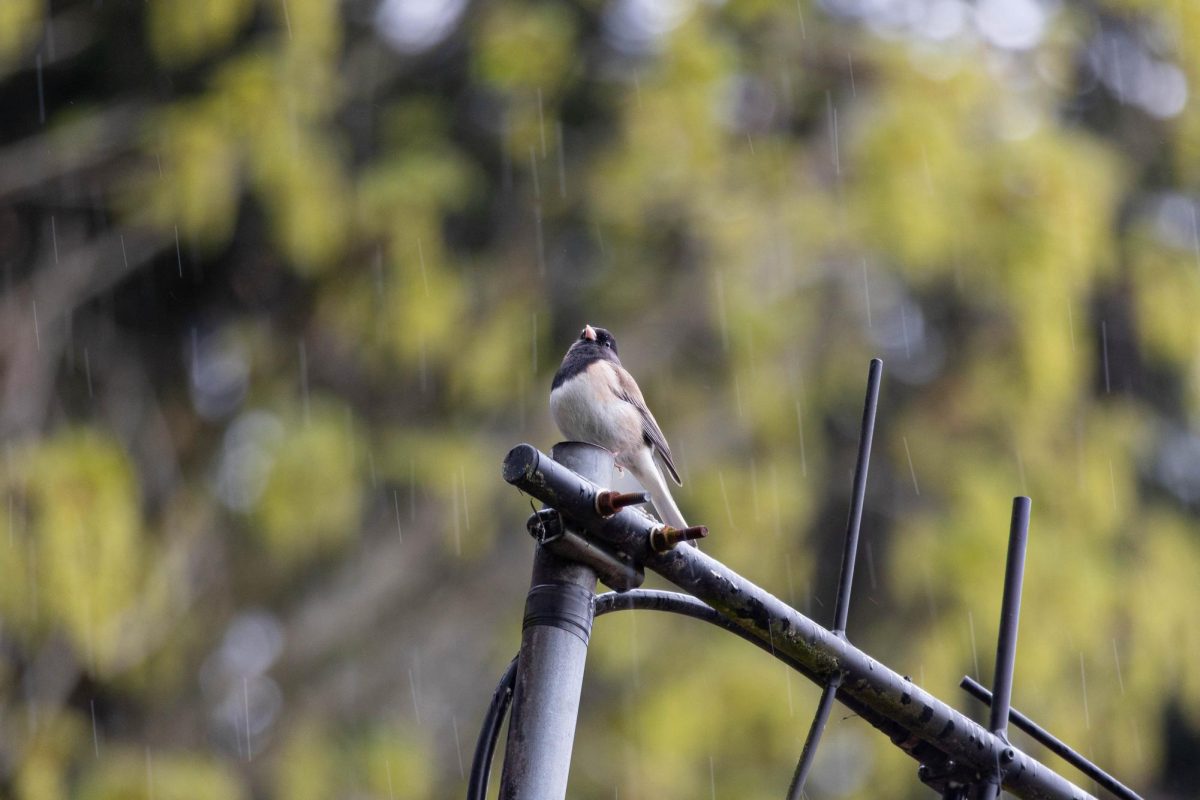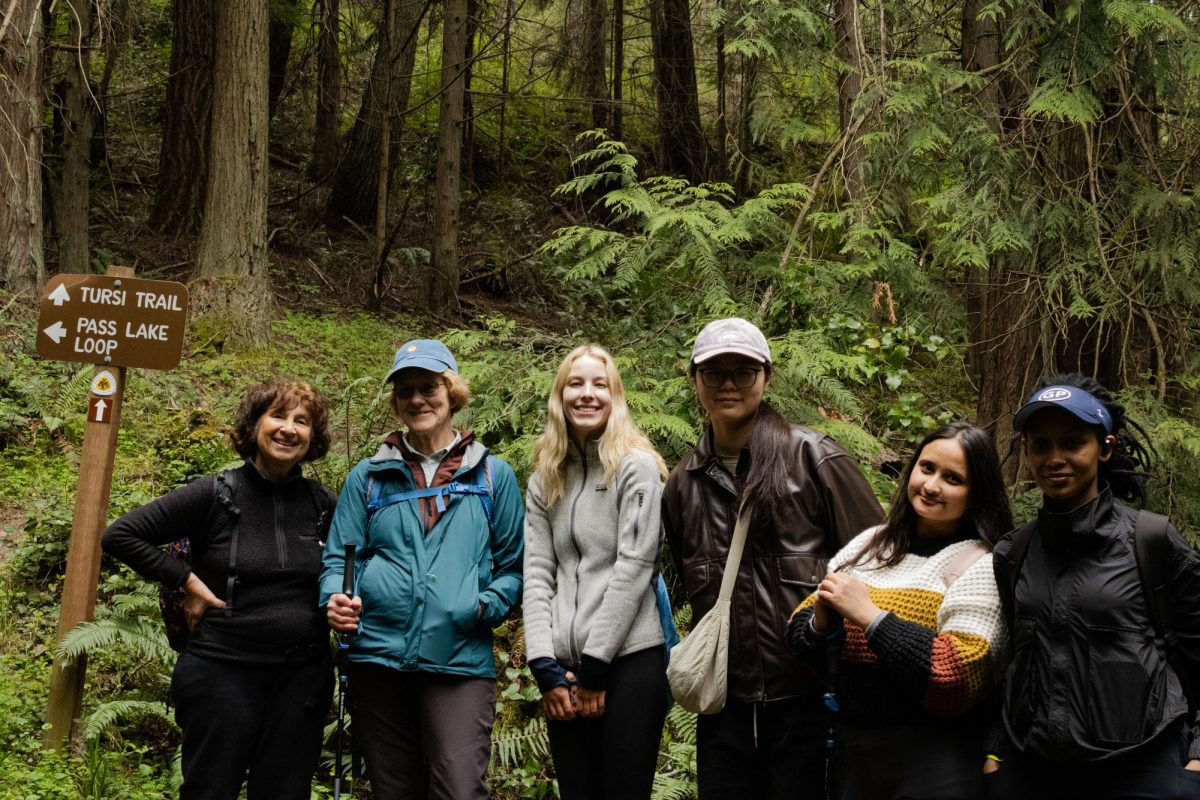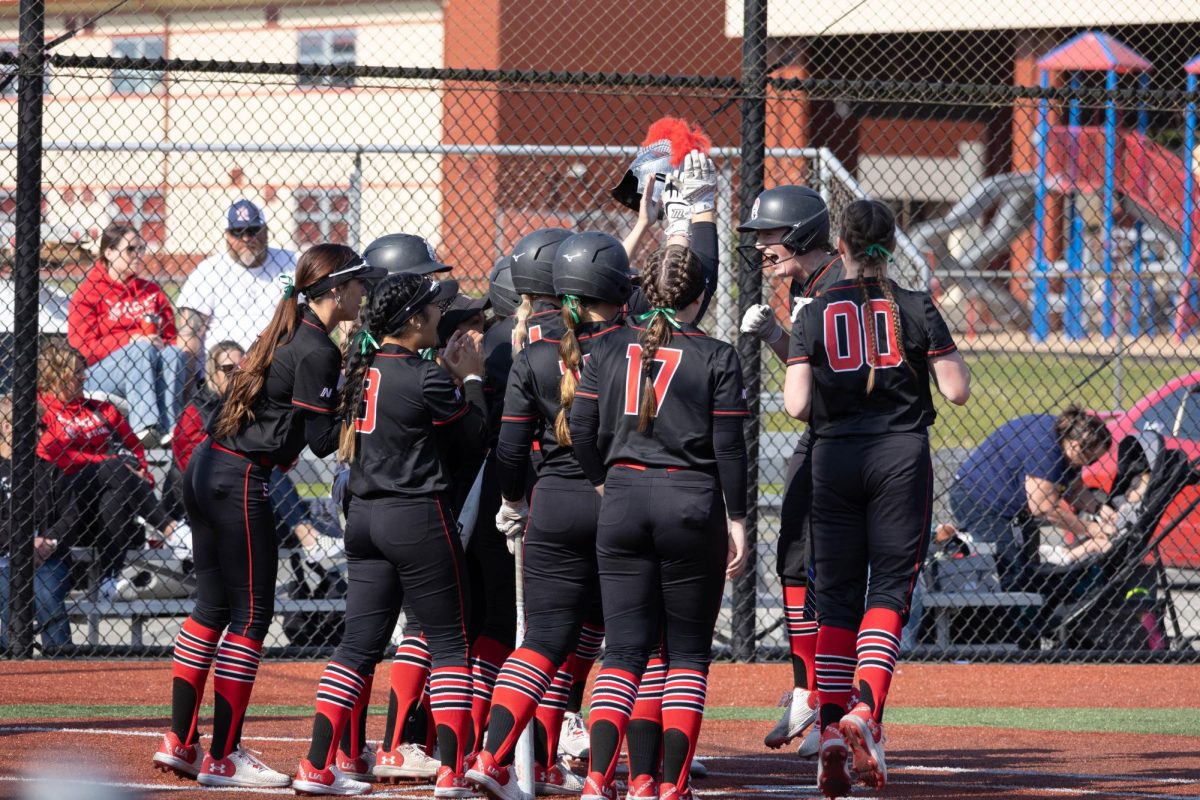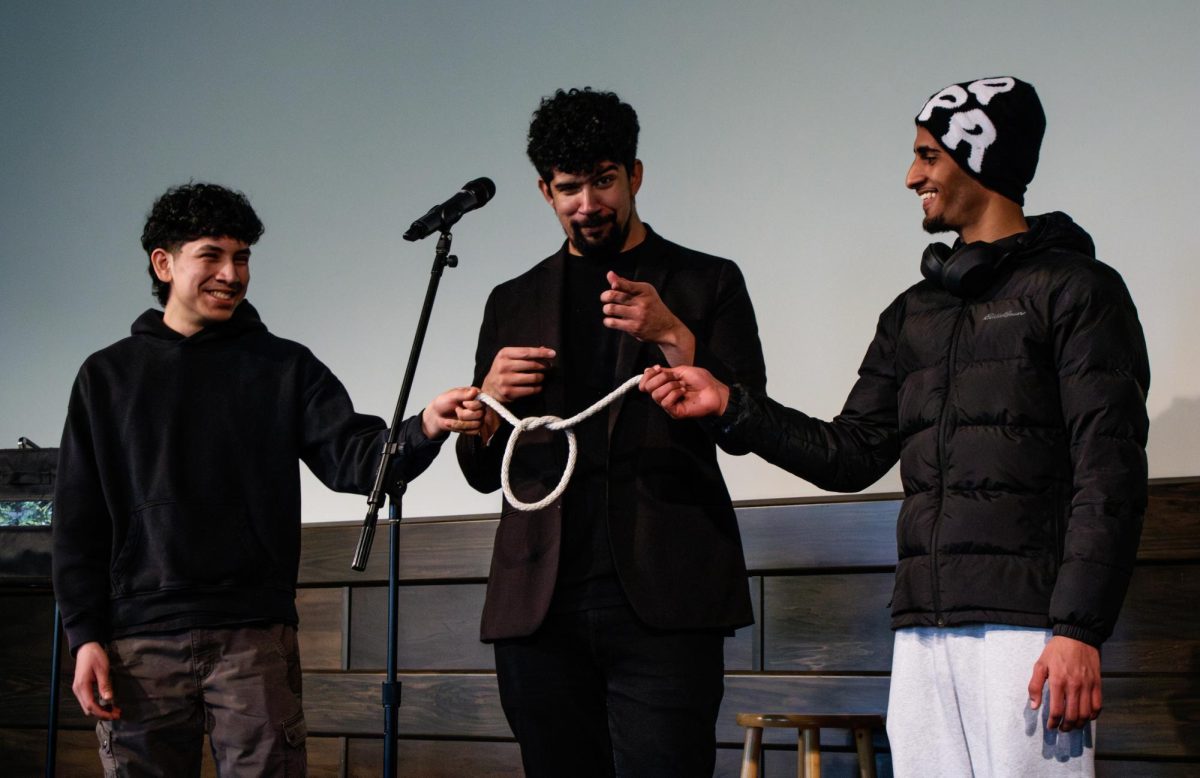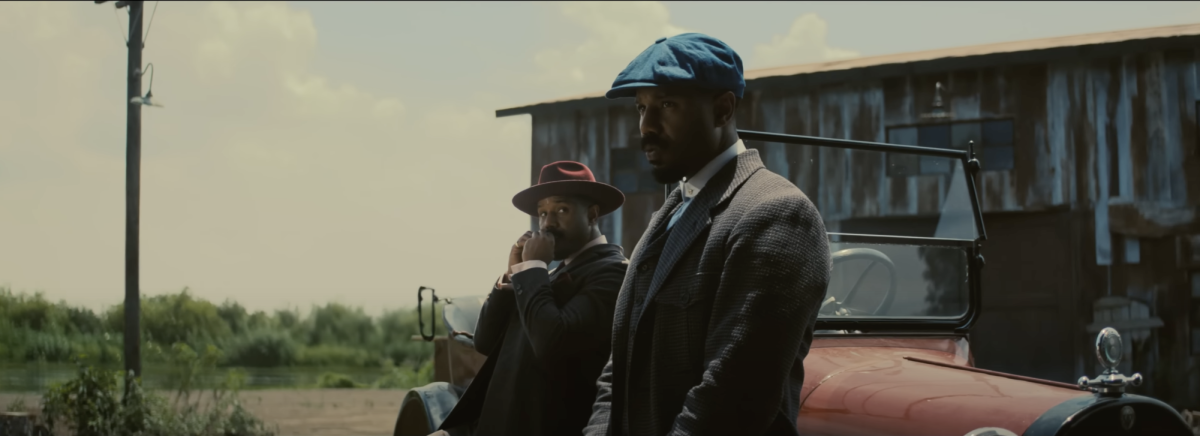The arrival of spring is signaled by many things – cherry blossoms, sporadic rain showers and of course, the songs and trills of Washington’s many bird species.
There are thousands of various avian species, many of which have different appearances within species — something that can make recognizing them very difficult. While getting into the hobby of birding can seem daunting at first, many guides exist to make entry easy. With the help of the Pilchuck Audubon Society’s Executive Director Brian Zinke, we at The Clipper have compiled a list of some birds (both year round and migratory) that you, as a novice birder, may be able to recognize.
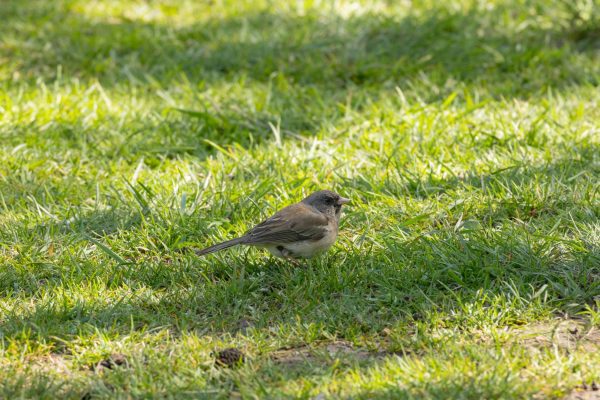
Dark-eyed Junco – The Dark-eyed Junco is a small sparrow species that inhabits forested areas. Like other sparrows, Dark-eyed Juncos feed heavily on seeds and can often be found foraging on the forest floor. Unlike other sparrows, this species of junco boasts numerous variations of color and pattern, even within regions. Some of the most common variations you’ll spot around here are the slate colored (mostly gray) and the Oregon (pictured in this article). They can be found year round.
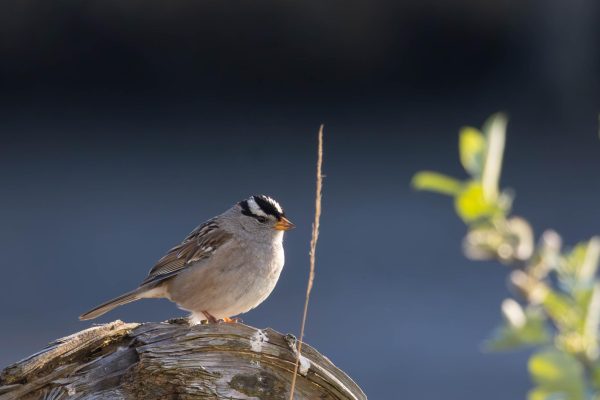
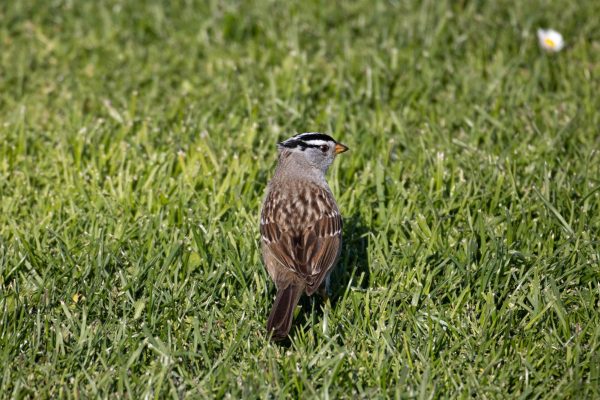
White-Crowned Sparrow – The White-Crowned Sparrow is a fairly large species and can be recognized by their long tails and (of course) white crowns. You can find these sparrows in the underbrush of our expansive conifer forests. Their diet is in line with other sparrows, consisting of seeds and small insects. They develop their signature crowns as adults. In juvenile stages, the crown will appear tan or brown in color. The White-crowned Sparrow is generally a winter bird but can be known to stick around year round in our part of the state.
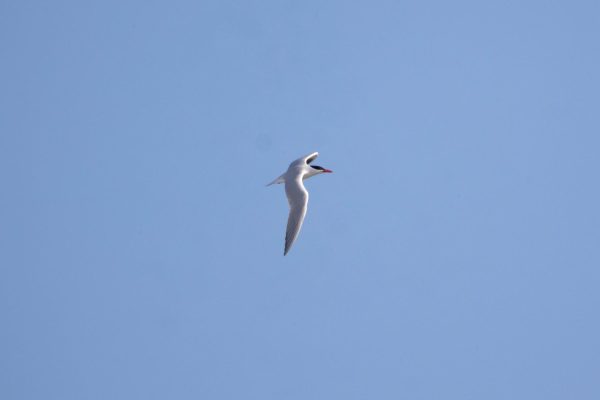
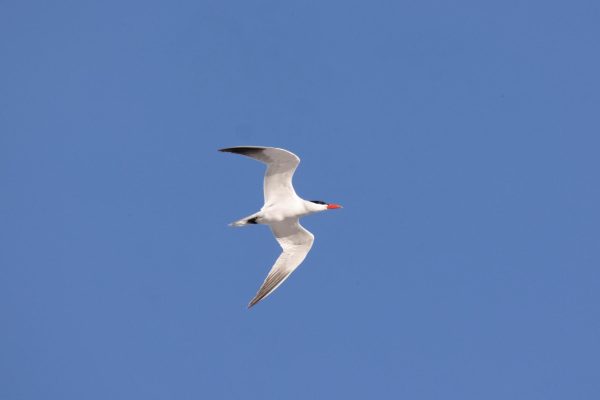
Caspian Tern – The Caspian Tern is the largest tern in the world. They are migratory birds which cruise over water in search of fish. The main way to recognize the Caspian Tern is by their bright red/orange bills and black cap. Note that the solid black cap is a summer trait and resembles more of a streak during other parts of the year. You can find them when they arrive in April but more commonly throughout the summer, until they travel back south in the fall.
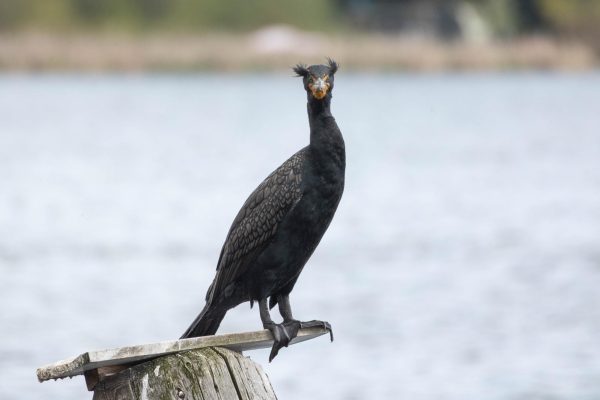
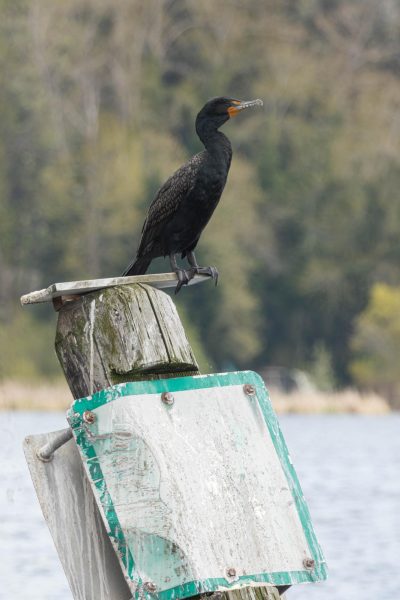
Double Crested Cormorant – If you spend any amount of time around the Everett Marina (or any of our bodies of water in the area), you’re almost bound to see one of our cormorant species. The more recognizable one is the Double Crested Cormorant. The characteristic to look out for is the orange skin around the base of the bill. Double Crested Cormorants swim along and dive from that position to catch fish. Another species in the area is the Pelagic Cormorant. You can tell them apart by their size and coloration. Pelagic cormorants are smaller and more slender while also having a glossy green shine. Both can be found year round with the Double Crested Cormorant being more common.
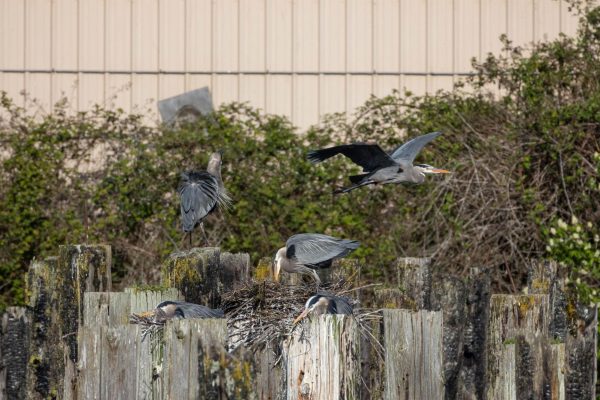
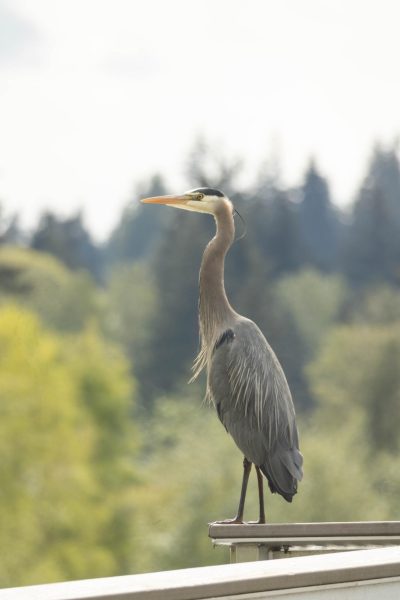
Great Blue Heron – With a number of heron rookeries (breeding grounds) in this part of the state, it’s extremely likely that you’ve seen a Great Blue Heron. The largest of the North American herons, this blue-gray bird can be found almost anywhere a body of water exists. Great Blue Herons hunt by standing still in water, tracking prey before thrusting their head and neck quickly to catch their unsuspecting meal. Their tall, slender stature makes them easy to spot and recognize. You can also catch these birds amongst the treeline, as they build their nests up off the ground. The Great Blue Heron is an annual resident in our area.
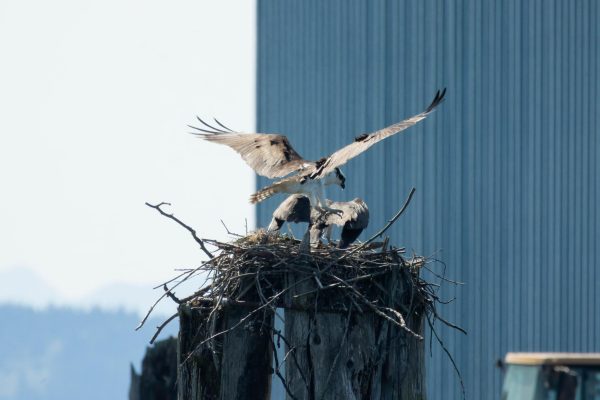
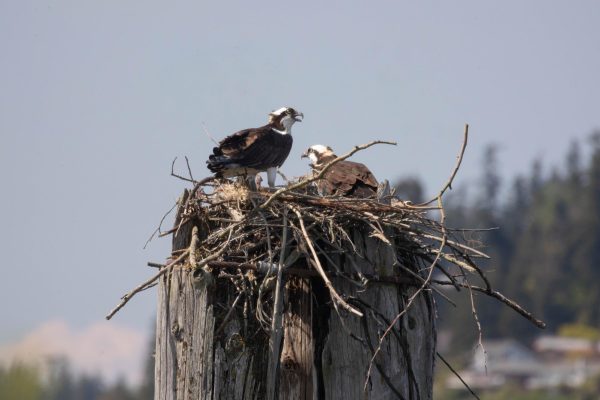
Osprey – The Osprey is a large brown and white hawk that nests near bodies of water. Also known as the fish-hawk, these raptors feed almost completely on fish. They have more white on their underside than other raptors and fly with a distinct “M-shape” that makes them fairly easy to recognize. Ospreys often mate for life and return to the same nests, adding to them every year, making some nests extremely large. You can find Osprey nests alongside the water, up and elevated, usually on large poles or pillars. They hunt by plunging into the water feet first, often hovering before snatching up their meal. Osprey are migratory birds that return during the spring, usually around April and remain until early fall.
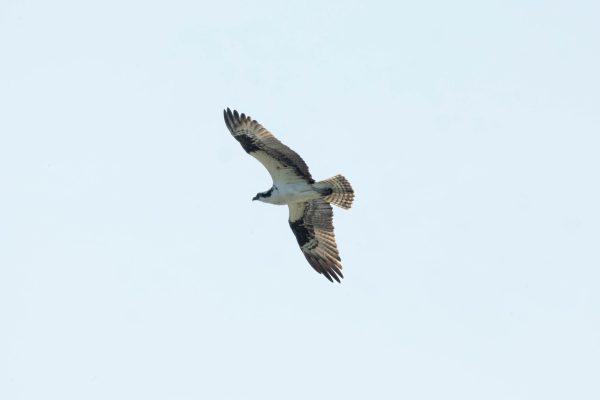
With this information, you have some fun, easily recognizable birds you can start birding with. For more information on birds, you can visit the Pilchuck Audubon website (https://www.pilchuckaudubon.org/) or download some really cool apps. The Merlin app and eBird are two incredible resources made available by Cornell University’s ornithology lab. Thanks again to Brian Zinke for providing some input, we hope this guide helps you spot some of these magnificent animals.

